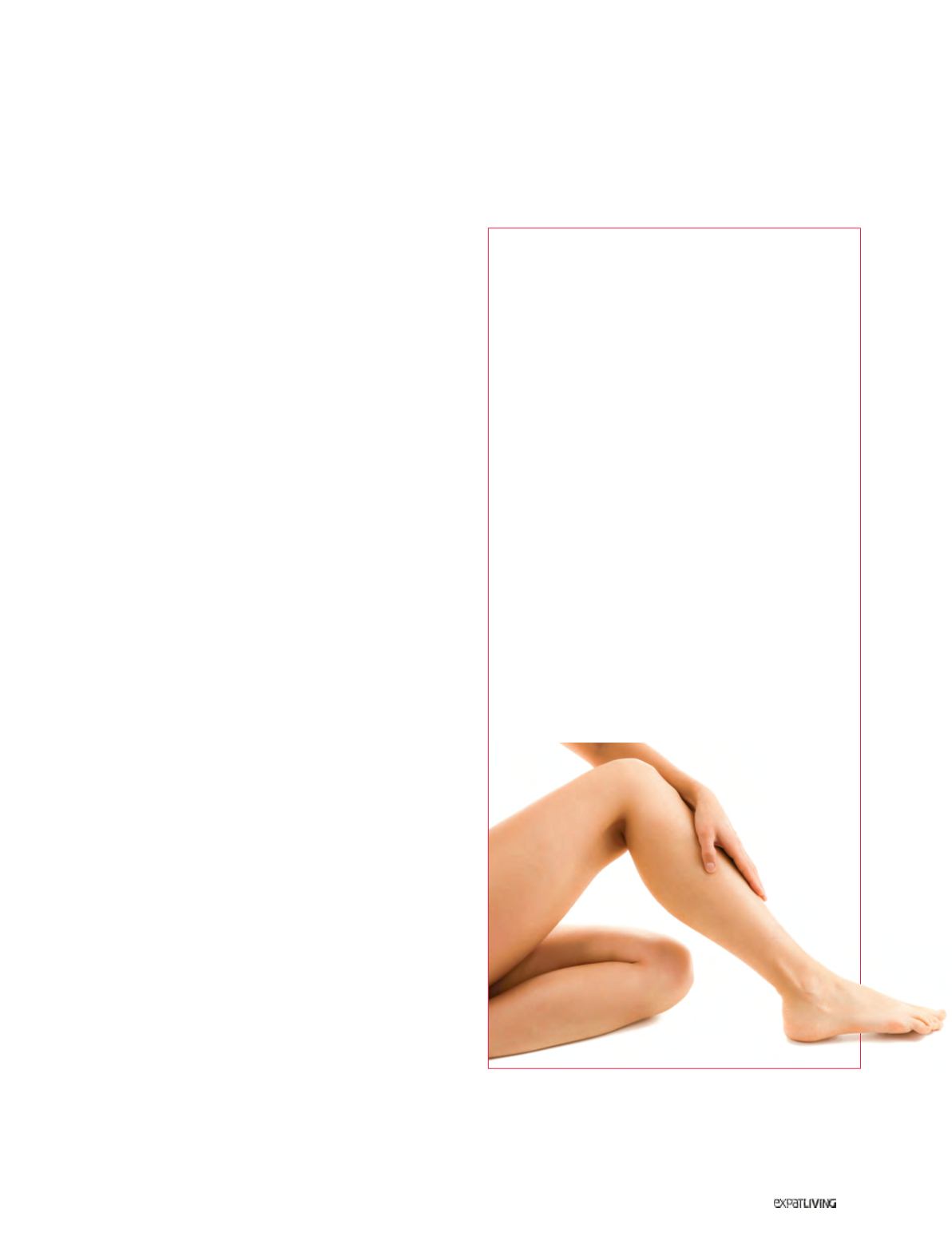

YOUR BLOOD
249
February15
Back in C irculation
Vein Treatment 101
• Endovenous laser therapy (EVLT)
An outpatient procedure under local anaesthesia, EVLT
involves inserting into the vein a fibre optic wire that
delivers heat and shrinks the vein. Minimal pain, very
little downtime and no scarring.
• Radiofrequency (RF) ablation
Similar to EVLT, this method uses RF energy to
eradicate veins.
• Injection sclerotherapy
Injecting a solution into the veins causes them to spasm
and permanently close, after which they generally
disappear within three months. Used for smaller
varicose veins and for spider veins.
• ClariVein
This mechanical-chemical ablation procedure
destroys the vein through a combination of physical
manipulation and injection sclerotherapy.
• Ultrasound-guided sclerotherapy
Ultrasound guides the surgeon to deliver the solution
with high precision into diseased veins that are not
externally visible, but can be viewed on an ultrasound
monitor.
• Foam sclerotherapy
A chemical foam is used to seal large varicose veins.
Tired of hiding behind long skirts and trousers in the heat
and humidity of Southeast Asia? Sure, getting a tan, either
real or fake, can make your legs look better – but only up
to a point. DR JOHN TAN shares some of his knowledge
and experience of getting rid of pesky, unsightly spider
veins forever.
What causes spider veins?
They’re caused by three main factors: genetics, meaning
you might have inherited weaker veins that are prone to
developing into spider veins; pregnancy; and prolonged
standing or sitting. And it’s an unfortunate fact that
wearing high-heeled shoes restricts calf muscle function
and circulation.
When should they be treated?
Spider veins aren’t generally harmful to one’s health,
unless they cause aches or numbness. It would be your
choice to have them removed for aesthetic reasons.
However, spider veins should absolutely be treated
when they’re associated with varicose veins at a deeper
level. This is the case in about five to 10 percent of patients
with spider veins.
How are spider veins treated?
Spider veins are treated with
injection sclerotherapy
,
after an ultrasound assessment to check on the condition
of the deeper veins. We have to do that because treating
a vein is only effective when it’s the source or feeder vein.
Injection sclerotherapy takes only around 30 minutes
and is relatively painless. Most cases require three to six
treatments to clear the veins completely.
If a deeper superficial vein malfunction is causing the
sluggish blood-flow, I would first treat it with
Vnus Closure
,
a radiofrequency-powered endovenous laser technique,
before treating the more superficial veins with injection
sclerotherapy.
What about spider veins on the body, or on the
face?
Injection sclerotherapy is not only for the legs: it’s just
as useful for getting rid of spider veins on the body and
face, too.
How would you advise the many women who
develop spider veins during pregnancy?
I would explain that the condition has been brought on
mainly by hormonal changes and increased blood volume
associated with pregnancy. Happily, in almost 80 percent
of these cases, the spider veins disappear within three
months, so I advise them to wait a few months before
seeking treatment.
The Vein Clinic & Surgery
#11-08 Paragon
290 Orchard Road
6245 6666 | theveinclinic.com.sg



















